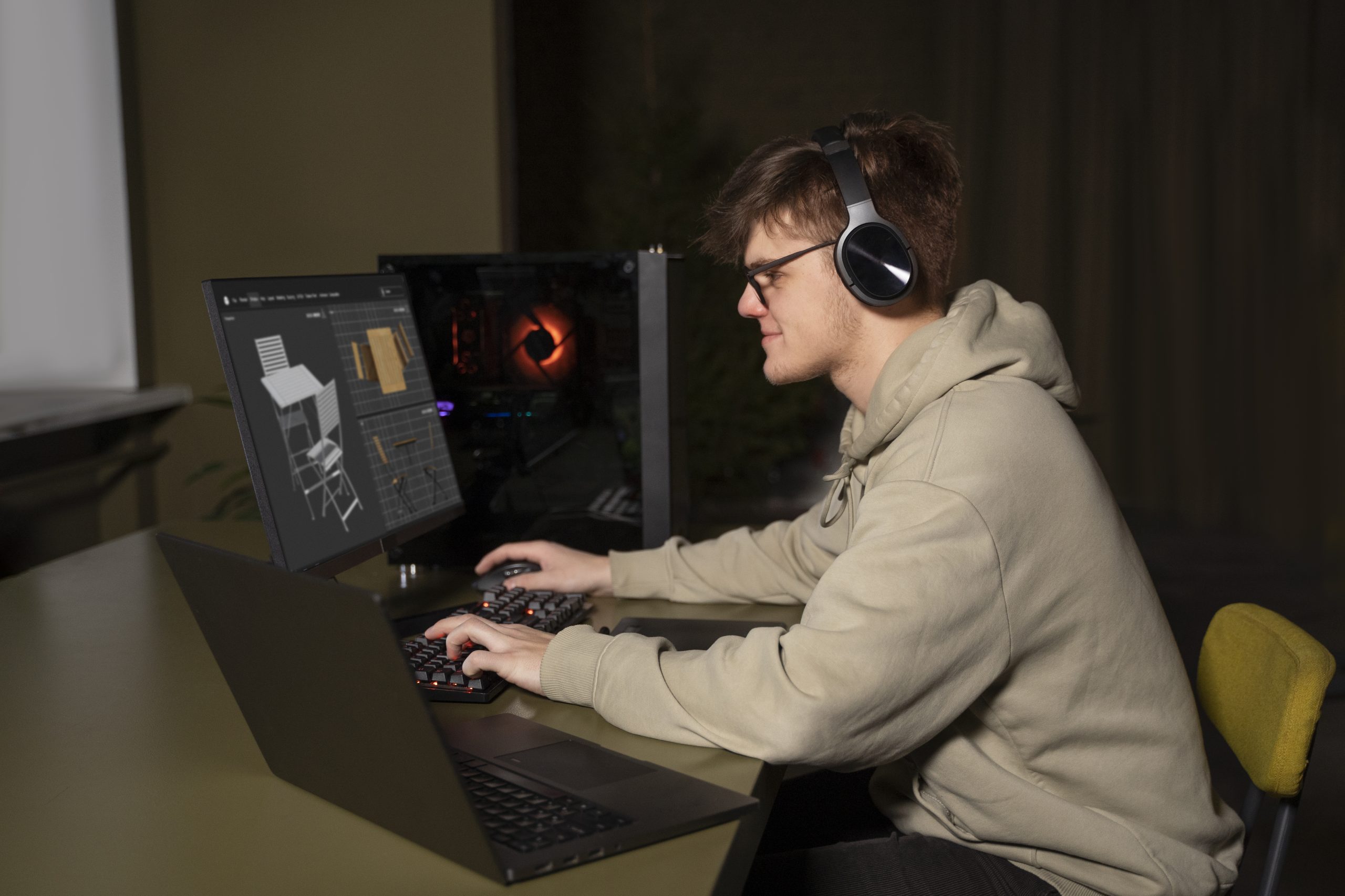
Blender Scientific Simulation: Powerful Research Tool
Blender scientific simulation is revolutionizing the way researchers visualize and analyze complex datasets. Known for its 3D animation capabilities, Blender has grown into a robust, open-source platform capable of simulating fluid dynamics, fracture patterns, and cloth behavior. In this guide, we’ll explore its applications, benefits, and how scientists can harness it for advanced modeling without breaking their budget.
Why Use Blender Scientific Simulation?
Blender’s open-source nature means it’s freely available to everyone, from students to large research institutions. Beyond animation, Blender simulation delivers high-accuracy results for physics-driven modeling, making it a competitive alternative to costly commercial software.
Key benefits include:
-
Free and Open-Source: Perfect for budget-conscious labs and universities.
-
Customizable Tools: Tailor simulations to match specific research requirements.
-
Supportive Community: Access forums, tutorials, and plugins built for scientific workflows.
For more about the Blender community, visit the official Blender Community Hub.
Who Uses Blender Scientific Simulation?
Researchers in physics, engineering, material science, and even biology turn to scientific simulation for tasks like:
-
Modeling fluid flows in oceanography or biomedical research.
-
Simulating fractures to test material durability.
-
Analyzing fabric behavior in robotics or textile engineering.
You can find related open-source science workflows in our The Art of Scientific Visualization Aesthetics Explained.
Fluid Dynamics with Blender Scientific Simulation
Fluid dynamics modeling helps researchers understand how liquids and gases behave under various conditions. Blender’s Mantaflow engine makes Blender scientific simulation ideal for producing accurate, visually compelling results.
How to simulate fluids:
-
Set Up the Scene: Create a domain object to contain the fluid.
-
Adjust Parameters: Define viscosity, density, and flow type.
-
Run the Simulation: Bake the data and visualize the movement.
Applications include: ocean current predictions, blood flow modeling in medical studies, and chemical reaction analysis. For advanced details, see the Mantaflow Documentation.
Fracture Modeling in Blender Scientific Simulation
Fracture simulation predicts how materials break under stress. Using Blender’s Cell Fracture add-on, Blender scientific simulation can mimic real-world breakage patterns for engineering and safety research.
Steps to create fracture simulations:
-
Enable Add-On: Activate Cell Fracture in Preferences.
-
Fracture the Object: Divide a mesh into realistic fragments.
-
Simulate Physics: Apply forces to observe how parts interact.
Practical uses range from crash test modeling to structural failure analysis. Explore more tools in the Blender Add-ons Catalog.
Cloth Physics in Blender Scientific Simulation
Cloth modeling reproduces fabric movement under forces like wind or gravity. Blender scientific simulation handles textile and soft material studies with remarkable accuracy.
To model cloth:
-
Create a Mesh: Start with a plane or garment shape.
-
Apply Cloth Physics: Adjust stiffness, weight, and damping.
-
Simulate Interactions: Enable collisions with other objects.
Research applications include parachute design, medical sutures, and even simulating cell membranes in biology.
Getting Started with Blender Scientific Simulation
Even beginners can dive into Blender scientific simulation with minimal setup.
Installation and setup steps:
-
Download Blender: Get it free here.
-
Install Add-Ons: Activate Mantaflow or Cell Fracture in Preferences.
-
Learn Basics: Follow Blender’s beginner-friendly tutorials.
Pro tips:
-
Start with small-scale projects to master physics settings.
-
Join Q&A forums like Blender Stack Exchange.
-
Export simulation data as CSV or image sequences for analysis.
Why Choose Blender Over Paid Simulation Software?
Compared to platforms like ANSYS or COMSOL, Blender simulation offers a cost-effective, flexible alternative.
Advantages:
-
Free Access: No costly licenses, making it ideal for global collaboration.
-
Cross-Platform Support: Works on Windows, macOS, and Linux.
-
Custom Scripting: Python integration lets researchers build tailored tools.
Challenges and Solutions in Blender Simulation
Like any powerful tool, Blender scientific simulation has a learning curve and processing demands.
Common challenges:
-
Slow Computations: Large models require strong hardware.
-
Complex Interface: Can overwhelm beginners.
-
Data Export: May require format conversions.
Solutions:
-
Use cloud computing (e.g., AWS EC2 Instances) for heavy workloads.
-
Follow step-by-step YouTube tutorials.
-
Automate exports with Python scripts.
The Future of Blender Scientific Simulation
Continuous updates make Blender simulation more powerful each year. Upcoming trends include:
-
Real-Time Simulations: Instant feedback for faster research cycles.
-
AI Integration: Machine learning to improve accuracy.
-
Collaborative Workflows: Cloud-based simulation sharing for teams.
Stay informed by visiting the Blender Development Blog.
FAQs
What is Blender scientific simulation used for?
It models fluids, fractures, and fabrics for scientific and engineering applications.
Is it free for research use?
Yes, it’s completely free and open-source.
Can beginners use it effectively?
Absolutely start small and grow your skills with tutorials.
How does it compare to paid tools?
It offers comparable features at zero cost, with customization options.
Start Simulating with Blender Today
From fluid motion studies to fracture analysis, Blender simulation offers an unmatched combination of accuracy, flexibility, and cost-effectiveness. Download it, explore its vast capabilities, and join a growing network of scientists using Blender to push the boundaries of research.
Visit our The Role of Haptic Feedback in Scientific Visualization to access guides, templates, and case studies.
Author Profile

- Online Media & PR Strategist
- Hello there! I'm Online Media & PR Strategist at NeticSpace | Passionate Journalist, Blogger, and SEO Specialist
Latest entries
 ColocationNovember 12, 2025Colocation Security Model Implementation
ColocationNovember 12, 2025Colocation Security Model Implementation Artificial InteligenceNovember 7, 2025SAP AI Strategy Enterprise Advances and Developer Tools
Artificial InteligenceNovember 7, 2025SAP AI Strategy Enterprise Advances and Developer Tools Scientific VisualizationOctober 29, 2025Federated Learning Technology in Medical Privacy AI
Scientific VisualizationOctober 29, 2025Federated Learning Technology in Medical Privacy AI Scientific VisualizationOctober 29, 2025Brain Visualization Ethics: Balancing Innovation and Privacy
Scientific VisualizationOctober 29, 2025Brain Visualization Ethics: Balancing Innovation and Privacy

